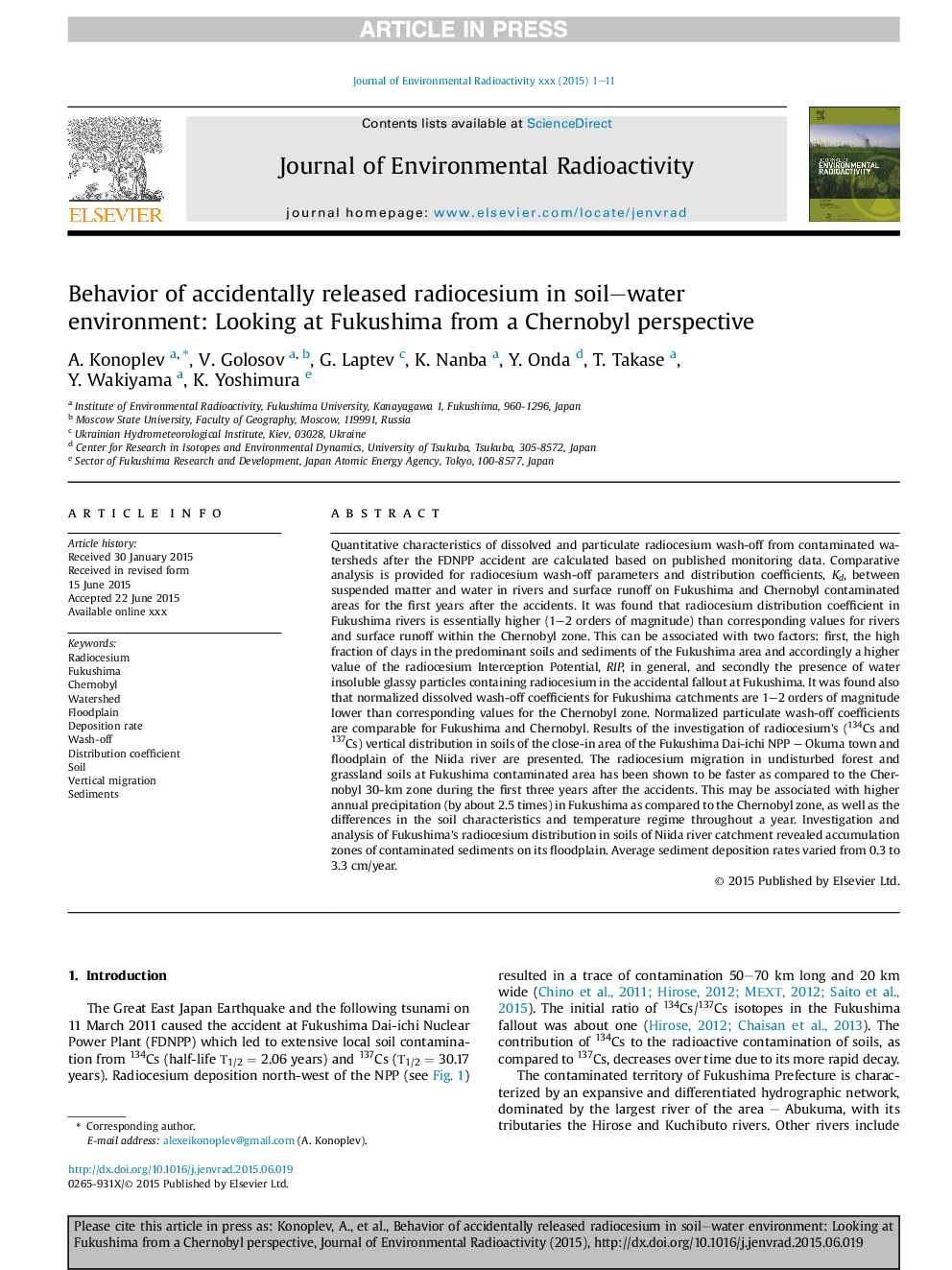| کد مقاله | کد نشریه | سال انتشار | مقاله انگلیسی | نسخه تمام متن |
|---|---|---|---|---|
| 10686545 | 1016744 | 2016 | 11 صفحه PDF | دانلود رایگان |
عنوان انگلیسی مقاله ISI
Behavior of accidentally released radiocesium in soil-water environment: Looking at Fukushima from a Chernobyl perspective
ترجمه فارسی عنوان
رفتار رادیوسسیوم به طور تصادفی منتشر شده در محیط آب و خاک: نگاهی به فوکوشیما از دیدگاه چرنوبیل
دانلود مقاله + سفارش ترجمه
دانلود مقاله ISI انگلیسی
رایگان برای ایرانیان
کلمات کلیدی
رادیوسیته، فوکوشیما، چرنوبیل، حوزه آبریز، سیب زمینی، نرخ رسوب، شستشو کردن، ضریب توزیع، خاک مهاجرت عمودی، رسوبات،
موضوعات مرتبط
مهندسی و علوم پایه
مهندسی انرژی
انرژی هسته ای و مهندسی
چکیده انگلیسی
Quantitative characteristics of dissolved and particulate radiocesium wash-off from contaminated watersheds after the FDNPP accident are calculated based on published monitoring data. Comparative analysis is provided for radiocesium wash-off parameters and distribution coefficients, Kd, between suspended matter and water in rivers and surface runoff on Fukushima and Chernobyl contaminated areas for the first years after the accidents. It was found that radiocesium distribution coefficient in Fukushima rivers is essentially higher (1-2 orders of magnitude) than corresponding values for rivers and surface runoff within the Chernobyl zone. This can be associated with two factors: first, the high fraction of clays in the predominant soils and sediments of the Fukushima area and accordingly a higher value of the radiocesium Interception Potential, RIP, in general, and secondly the presence of water insoluble glassy particles containing radiocesium in the accidental fallout at Fukushima. It was found also that normalized dissolved wash-off coefficients for Fukushima catchments are 1-2 orders of magnitude lower than corresponding values for the Chernobyl zone. Normalized particulate wash-off coefficients are comparable for Fukushima and Chernobyl. Results of the investigation of radiocesium's (134Cs and 137Cs) vertical distribution in soils of the close-in area of the Fukushima Dai-ichi NPP - Okuma town and floodplain of the Niida river are presented. The radiocesium migration in undisturbed forest and grassland soils at Fukushima contaminated area has been shown to be faster as compared to the Chernobyl 30-km zone during the first three years after the accidents. This may be associated with higher annual precipitation (by about 2.5 times) in Fukushima as compared to the Chernobyl zone, as well as the differences in the soil characteristics and temperature regime throughout a year. Investigation and analysis of Fukushima's radiocesium distribution in soils of Niida river catchment revealed accumulation zones of contaminated sediments on its floodplain. Average sediment deposition rates varied from 0.3 to 3.3Â cm/year.
ناشر
Database: Elsevier - ScienceDirect (ساینس دایرکت)
Journal: Journal of Environmental Radioactivity - Volume 151, Part 3, January 2016, Pages 568-578
Journal: Journal of Environmental Radioactivity - Volume 151, Part 3, January 2016, Pages 568-578
نویسندگان
A. Konoplev, V. Golosov, G. Laptev, K. Nanba, Y. Onda, T. Takase, Y. Wakiyama, K. Yoshimura,
